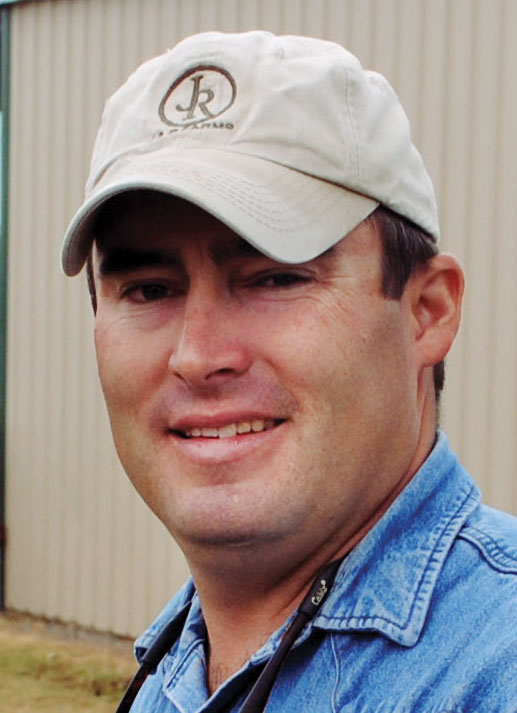
Two families in the small White County, Ark., town of Floyd are united in the goal of bringing the best Brahman cattle seedstock to the world.
The proprietors of J&R Farms, Jim and Rhonda Usery, began their purebred operation in 2006.
“I’ve been around cattle my whole life,” Jim told Ozarks Farm & Neighbor. “My grandfather had cattle when I was growing up; I spent a lot of time around them out at his ranch. I always loved cattle, and then my wife saw some Brahman cattle somewhere, and she loved them. So, we got into the cattle business.”
They raise both red and gray registered Brahman. They also have an F1 program, where they cross their cattle with Herefords and Red Angus. Usery said he’s never been around cattle like the Brahman breed.
“Each one of them has their own disposition,” he said. “They’re just unique; there’s nothing in the English breeds that compares to their longevity, as far as raising calves and being able to produce calves.”
Brahman are most often seen in the far southern U.S., where their ability to withstand heat gives them a leg up over other breeds. But Usery said they perform well in central Arkansas.
“They don’t mind the winters, and they take the summers really well. You’ll see the black cattle in the pond, and these cattle will be out laying in the middle of the pasture when it’s 105 degrees,” he said.
Both Userys have off-farm jobs. Rhonda owns Uco Equipment, which sells pipeline and powerline attachments, in nearby Cabot. Jim, who previously owned his own powerline construction business, sold it a few years ago and is now working for Uco full time. Both feed cattle and perform other chores on the ranch. Jim says his previous business was so stressful, “coming home and messing with my calves was my therapy. That was the only thing that kept me sane.”
So the ranch’s day-to-day work falls to its manager, John Allen, a local cattle producer who has been working for J&R Farms for about 10 years.
“I’ve always had cattle in this area, so I was over here helping whenever they got into a bind or needed some assistance in some way,” Allen told OFN.
Allen has his own commercial cattle operation, with cow/calf pairs and midgroups of stockers being readied for the feedlot, plus 100-head of registered Hereford in a seedstock business. However, he focuses much of his attention on J&R, which has expanded its market area. When OFN visited the ranch, Allen had buyers present from Tennessee, and another called in from Mississippi.
“A lot of our cattle go to the Gulf Coast – Florida, Louisiana, South Texas,” he said. “Recently, though, we’ve started moving a lot of cattle to the east and north, even.”
He said northern herds have “lots and lots of Angus influenced cattle, with no ‘eared’ influence (Brahmans are known for long ears) and people are wanting to add some eared cattle back into their cattle to get the heterosis.”
Allen said while most people categorize Brahmans as a novelty item, he wants to demonstrate their beef producing capabilities. This year, in a national carcass ultrasound test, J&R had the highest carcass merit female for the 2014 calf crop. They’ve also produced champion show animals, including the Champion Senior Bull at the 2013 San Antonio (Texas) Stock Show.
“Purple and blue ribbons are nice, but the carcass merit means a lot to me,” Allen said. “That’s a true beef animal…When you can show them carcass merits and feed efficiency and adaptability, there’s a place for these cattle.”
Much of their existing stock also descended from national and international champion animals. Allen said the 2011 international champion red female was out of their bull, which was the 2007 international champion.
“We’ve got some really well put together cattle here,” Allen said.
“We’re trying to create that perfect Brahman cow,” Jim Usery said. “F1s are in high demand and you can’t raise them fast enough. We found a really good niche that works for us; when we retain our heifers, their first calf is going to be an F1. We try not to have any heifers that we breed purebred on their first calves; we want them to learn to be good mamas first, before we start breeding them with the purebred Brahmans.”
The ranch is spread over three locations and there are only a few Brahman breeders in Arkansas, and none of the farms’ neighbors use the breed. They also market semen and embryos. The herd has been limited to about 300 head since the 2012 drought, but with improvements planned for next spring they hope to expand to 1,200.








I am interested in a brahman. Do you have photos and whats the price per pound ?